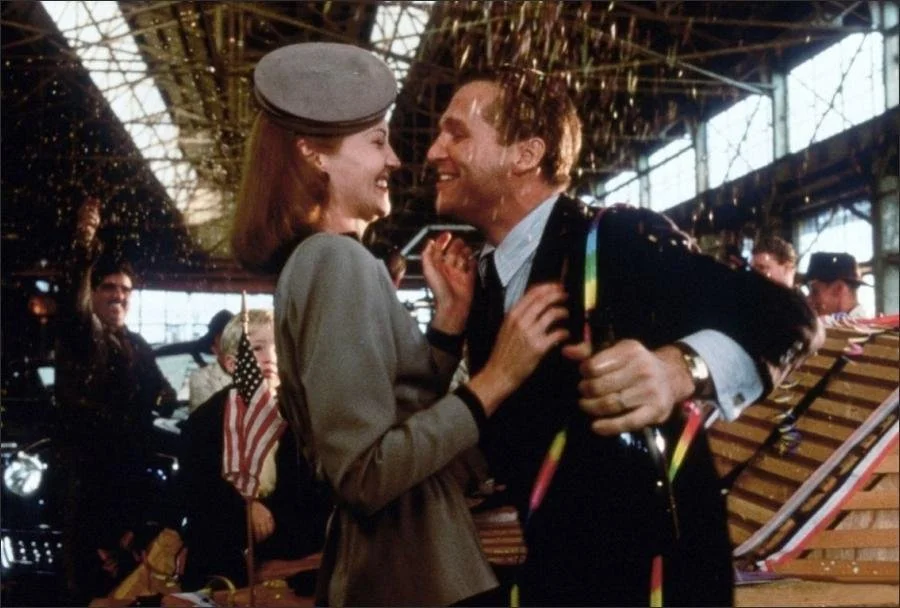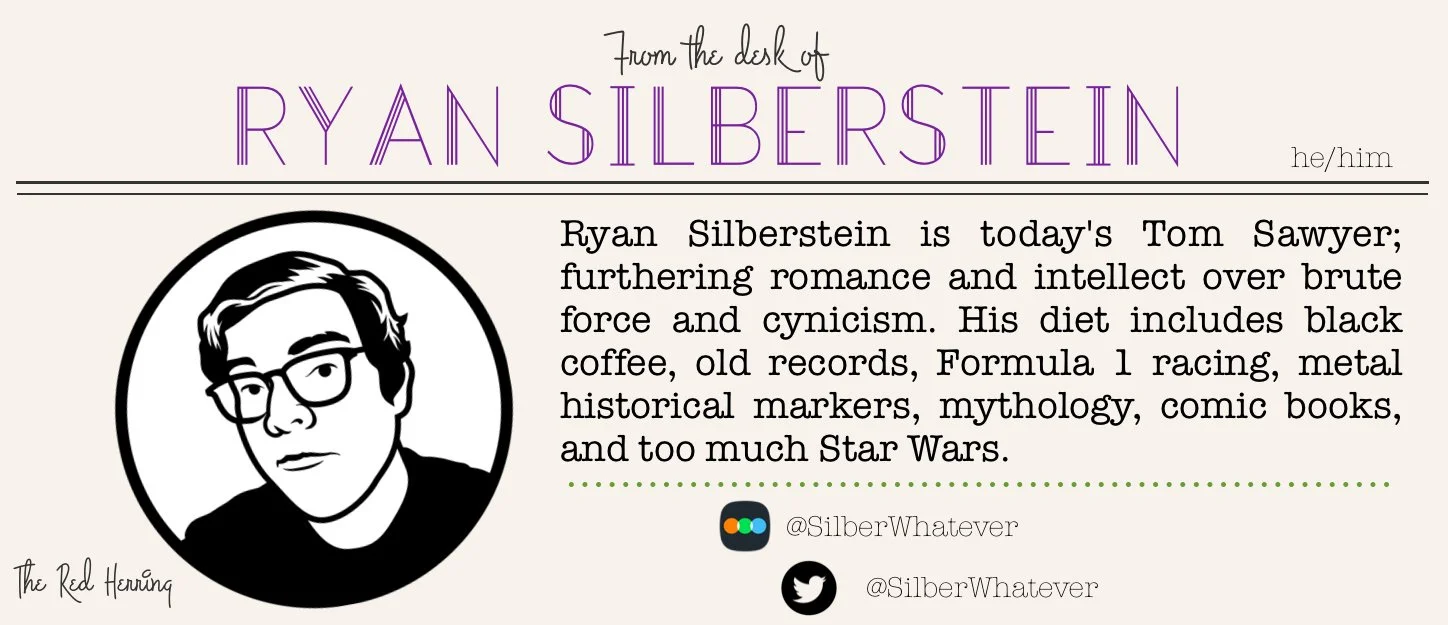Coppola Week: A Man and his dream – Coppola in the 80s
This week, in honor of the wide release of Megalopolis, MovieJawn is looking back at some of Francis Ford Coppola’s lesser-discussed work. No Godfathers, Conversations, or Apocalypses right Now. Read the other articles here.
by Ryan Silberstein, Managing Editor, Red Herring
In order to fully appreciate Tucker: The Man and His Dream, Francis Ford Coppola’s 1988 movie, you need to understand the man Coppola and his dream. Along with the other “Movie Brats”—the young New Hollywood directors like Martin Scorsese, Steven Spielberg, George Lucas, and Brian de Palma—Coppola’s dream was to be able to be a total auteur: writing, directing, producing, and financing his own films. Not just total control, but total freedom from Hollywood. Coppola would briefly achieve this dream a couple of times (as would Lucas after Star Wars and Spielberg in the 1990s with DreamWorks) but would always seem to fly too close to the sun, betting too big and losing money, forcing him back to the system. One of the rebuilding eras of Coppola’s career was most of the 1980s, which was full of passion projects, experimentation, and big swings at success all at once.
It was easy to be a Francis Ford Coppola fan in the 1970s. Two Godfather movies, The Conversation, and Apocalypse Now secured his place in the Hollywood firmament as one of the greatest directors of all time. Coppola in the 1980s is a different animal entirely, with some of his biggest failures and a lot of experiments, it is just as interesting as his period being American films’ golden boy.
His first film of the decade was One from the Heart (1982), in which Coppola attempted to blend the “kitchen sink” naturalism favored by the Hollywood New Wave with the dreamlike feel of classical musicals. Audiences rejected it even more resoundingly than they had Scorsese’s version of the same experiment, and One from the Heart left U.S. theaters with a total gross of $636,796 against a $26 million budget. When I watched it for the first time two years ago, I found it to be romantic along a few different meanings of that word, and I connected with it on an emotional level. If you haven’t seen it, it is well worth the time, especially if you are a Tom Waits fan.
One from the Heart’s disastrous release imploded Coppola’s dream, one he had held for much of his career: total independence from the Hollywood studios. After that, Coppola steadily worked for the rest of the decade, starting his 1983 S. E. Hinton duology, The Outsiders and Rumble Fish, with both films featuring up and coming youth stars. After that came The Cotton Club, which reunited Coppola with Godfather producer Robert Evans. It was also a financial failure, though it did receive some awards recognition.
The two brightest spots for Coppola’s work in the ‘80s both came in 1986: Peggy Sue Got Married and Captain EO. The former—a time travel movie where Kathleen Turner attends her 25th high school reunion in 1985 and wakes up back in 1960, allowing her to potentially choose a different future for herself—was released at a time of Boomers’ nostalgia for midcentury America. While the time travel and high school elements were also featured in Back to the Future the year before, Peggy Sue also sits at the same lunch table as The Big Chill and American Graffiti. All of these are films that play into that nostalgia but are also accessible to younger audiences (and come with killer pop soundtracks).
Captain EO, which debuted at EPCOT in Disney World a month before Peggy Sue Got Married, was a 17-minute 4D short film starring Michael Jackson, co-written by Coppola, producer Rusty Lemorande, and George Lucas. The film ended up playing at four Disney parks for about a decade and then was brought back in 2010 after Jackson’s death. I got to see it during its revival at EPCOT (which lasted 5 years) and loved it. I wish it was on Disney+, but that’s a story for another time. But this project reunited Coppola and Lucas, which led directly to Coppola finally Tucker.
I say finally because Preston Tucker and his eponymous automobiles had been a lifelong fascination of Coppola’s thanks to his father, Carmine. The elder Coppola was a dreamer too and never quite had the big break he envisioned for his own career as a composer. Perhaps it was this belief in dreams that led to Carmine investing $5,000 in the Tucker Company as well as an additional $5,000 as a down payment towards one of the first Tucker cars. According to Sam Wasson’s book, The Path to Paradise: A Francis Ford Coppola Story, a young Francis would enthusiastically ask for updates about the Tucker, until Carmine had to confess the car wasn’t coming.
”Why?”
“They won’t let him [Tucker] buy steel.”
“Why?”
“The car is too good.”
After the end of the second World War, the Big Three auto manufacturers (Ford, Chrysler, and General Motors) had not introduced any new models since 1941, and were not in a hurry to innovate. This opened the door for smaller, independent businesses to try to enter the market. One of these people was Tucker, who wanted to create a new car with two priorities: safety features and sleek, futuristic styling. He called it the Tucker 48. The safety features, several of which are now common on American automobiles, include breakaway windshields made from shatterproof glass, seatbelts, and a “crash zone” to protect occupants. Only 51 cars were made before the company was shut down in 1949 amid scandal and accusations of stock fraud, alleging that Tucker never intended to actually produce a production car. Tucker was acquitted of all charges.
Coppola had been planning a movie about Tucker after The Conversation and in 1976 was ramping it up as a musical with music and lyrics by Leonard Bernstein, Betty Comdenand Adolph Green. It was to feature other American inventor/moguls: Thomas Edison, Henry Ford, Harvey Samuel Firestone, and Andrew Carnegie as supporting characters. It conceptually sounds similar to Steven Sondheim’s Assassins (one of my very favorite musicals) but was scrapped when Coppola’s Zoetrope ran into financial trouble. Still the idea remained. And so, during the making of Captain EO, George Lucas offered to step in and help out Coppola the way that Zoetrope had done for Lucas with American Graffiti back in 1973. Lucas signed on as executive producer, and Tucker: The Man and His Dream was to be released by Lucasfilm.
Coppola, Lucas, and a Tucker 48
On Lucas’ suggestion, Coppola abandoned the musical concept and leaned into the David and Goliath aspect of Tucker’s story, doubling down by taking further inspiration from Frank Capra. To further that connection, Coppola hired Arnold Schulman, who had scripted Capra’s A Hole in the Head (1959). Thanks to the involvement of legendary cinematographer Vittorio Storaro—who also shot Apocalypse Now, One From the Heart and Captain EO for Coppola and whose next project immediately after Tucker was Dick Tracy (1990)—the resulting film feels like a slick and vibrant blend of Coppola’s take on the theatricality of classic Hollywood a la One From the Heart and the dialogue-based rhythm of Capra’s direction.
Bringing Tucker and his family and associates to life is a stellar cast. I want to call out Joan Allen as Vera, Preston’s wife, especially. While Vera doesn’t get a lot to do actively in the film, Allen’s performance is incredibly important to the fabric of the film. She helps sell the late 1940s era through the way she carries herself and the ways she uses her face and body to communicate with her character’s husband in every scene they share. Also worth spotlighting is Martin Landau, who received an Academy Award nomination for Best Supporting Actor for his role as Abe Karaz, Tucker’s New York financier. Tucker marked the beginning of a career resurgence for Landau, who would go on to be nominated again for Crimes and Misdemeanors (1989) and winning for Ed Wood (1994).
Jeff Bridges turns his charisma up to the highest setting, copying some of Tucker’s mannerisms and embodying the eternal optimist of his subject. It is clear to me that Tucker was an influence on the Marvel Cinematic Universe of Howard Stark—especially as played by Dominic Cooper in Captain America: The First Avenger (2010) and Agent Carter (2015-16)—a bit ironic given Bridges’ turn as Obediah Stane in Iron Man (2008). He has that sense of postwar exuberance, an unshakable faith in the American Dream for himself.
The result of all of these pieces is absolutely enchanting and enthralling. The older I get, the more I realize the American Dream has been largely unattainable for most people in this country. While in Europe, upward mobility was blocked by the aristocracy, in the United States, it is the corporate/investor class that acts like dragons atop a pile of gold. Preston Tucker’s story exemplifies the gap between the “land of opportunity” and the reality of trying to disrupt a major industry. The phrase “the American Dream” was popularized by James Truslow Adams in 1931, when he wrote:
But there has been also the American dream, that dream of a land in which life should be better and richer and fuller for every man, with opportunity for each according to his ability or achievement. It is a difficult dream for the European upper classes to interpret adequately, and too many of us ourselves have grown weary and mistrustful of it. It is not a dream of motor cars and high wages merely, but a dream of social order in which each man and each woman shall be able to attain to the fullest stature of which they are innately capable, and be recognized by others for what they are, regardless of the fortuitous circumstances of birth or position...
There are many movies about the American Dream, many of them are cynical in tone, like Citizen Kane (1941), There Will Be Blood (2007), The Social Network (2010), and Copola’s own Godfather trilogy. What I deeply appreciate about Tucker is that the cynicism that underlies the story of the Tucker 48 never corrupts its protagonist. While Tucker becomes disillusioned, he never wavers from his dream. This unending optimism is and the lure of upward mobility, despite having reached its peak between 1945 and 1980 is—for better or for worse—what keeps America perpetuating itself. Men like Tucker, and like Francis Ford Coppola himself, are both aspirational and Icarus figures. They dreamed so big that America couldn’t contain them; because they wanted so badly to break the mold, they became a threat. This is truer for Tucker than Coppola, but it is easy to see how Coppola seems himself in the car maker. The dream will also never die. While Carmine never got his Tucker 48, both Francis and George Lucas each owned two.








